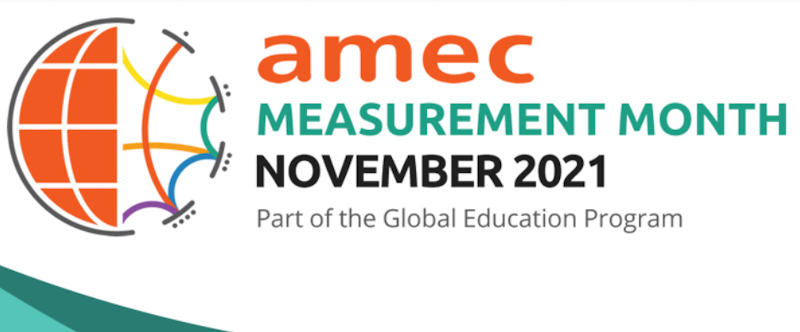A plea for simple but effective measurement
About the author
Jennifer Sanchis is an account director at CARMA. She studied the Crisis Communication Diploma with PR Academy.

How do you feel about Boris Johnson? Are you team Harry and Meghan or William and Kate? Do you like Donald Trump? Do you think Greta Thunberg is a credible activist?
Chances are, you don’t really know any of these people but have formed strong opinions about them. And that’s all been made possible through the lens of the media.
The media has a crucial role to play in our interpretation of the world, and its importance has rapidly gained in importance. It has been argued that “the media has changed more in the last five years than the previous five hundred.”
These changes even accelerated during the pandemic. According to the Reuters Institute of Journalism, 2021 was a year of profound and rapid digital change.
So how do you adapt and evolve in such a volatile environment?
With this blog, I would like to advocate for simple but effective measurement.
November is AMEC Measurement Month. We have seen a spate of webinars, fireside chats and fascinating presentations by world-renowned expert communicators.
Here’s a secret: measurement and evaluation is not rocket science, even though it might feel like it!
Jennifer Sanchis
CARMA
So I would like to highlight two important considerations to help us focus on what really matters when we talk about measurement and evaluation:
The value of reputation is increasing but PR budgets are at risk
The past few decades have seen an increasing interest in the value of reputation. Recent studies confirmed this ongoing trend with global executives now attributing more than half (63%) of their company’s market value to their company’s overall reputation.
Meanwhile, PR budgets have traditionally received less compared to advertising or owned media budgets. This could likely be due to the absence of data in the communicator’s strategy to effectively help explain how PR efforts contribute to an organisation’s goals.
This gap between PR budgets and trust towards earned media remains paradoxical as research showed that consumers are more inclined to be influenced by earned media than by owned and paid media.
With Covid-19 sending shock waves around world, PR budgets have become under even more scrutiny and showing effectiveness is no longer an option but a necessity.
Ultimately, if you can’t prove it, you lose it!
Data is not the issue. It’s how much data there is that’s the issue
If you look at who was running the world back in the 1990s, so not that long ago, the largest public companies by market capitalisation included General Electric, Shell, Coca-Cola, Exxon Mobil. They were energy or FMCG companies.
Who runs the world now? Data companies do: Apple, Amazon, Microsoft, Google, Facebook. Business models are now centered around the use of data.
Looking at how the PR industry navigated that change is interesting. Practitioners used to have to manually cut and clip individual pieces of print content to show how well (or not!) a campaign did. The “thud factor”, the heavy sound newspapers would make on your desk in the morning, was a indicator of success. These were the early days, and only a few of us can say they remember it.
Communicators went from measuring a few print and online articles to being inundated with earned media data. I really liked this quote from this AMEC panel discussion I moderated earlier this month: “Every person and their dog has a dashboard.” It’s so true!
Today’s challenge is simple: it’s easy to get pulled in every direction. I’ve lost count of how many KPIs actually exist today.
The good news is that effective measurement doesn’t need us to look at five hundred different metrics, but only those that matter.
For example, you should decide which KPIs are important to your success looking at your organisation’s awareness, reputation and engagement efforts. Did your organisation deliver a message? Did you engage with the desired audience and how did these people react to your message? Did you manage to provide a call to action?
Stick to these few metrics and remain consistent.
Everyone should look at best practice and measure outcomes
“A rising tide lifts all ships”, said Richard Bagnall the Chairman of AMEC. AMEC, the International association for the measurement and evaluation of communication, provides communicators with practical tools to foster best practice within the industry.
The Barcelona Principles 3.0 and the Integrated Measurement Framework are useful to understand the essential concepts and components that should guide any good measurement programmes.
Over the years, communicators have found themselves guilty of measuring in isolation, working in a silo. What these AMEC tools demonstrate is the importance of appealing to a wider group of stakeholders.
We can no longer use stats that have proved immaterial (AVEs, I’m looking at you). Communicators and organisations must now demonstrate impact in the communities they operate in.
So, I would like to repeat this one more time: measurement is not rocket science. The tools are out there and the knowledge is freely available.
Just do remember this: sometimes imperfect is good enough. Keep it simple and measure what matters.